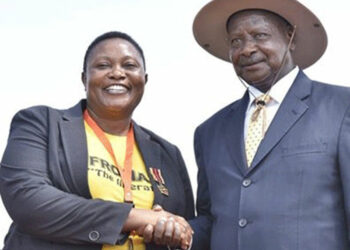By Denis Jjuuko
Dr Cyprian Kizito Lwanga, the Archbishop of the Kampala Catholic Diocese was quoted in the mainstream media over the weekend as having requested government to collect tithe on a monthly basis on Church’s behalf. Tithe if we are to go by the English dictionary is “one tenth of annual produce or earnings, formerly taken as a tax for the support of the Church and clergy.” Although there are many verses in the Bible on tithing, it can no longer be taken as tax. It has become voluntary.
Archbishop Lwanga’s concern is that people don’t pay tithe anymore or pay little which affects the running of the Church. He might be right but also Catholics give a lot to the Church. In almost every Sunday mass, apart from offertory, there is some sort of fundraising. Either there is need for new pews, music organs, new fancy Church, fees for some Seminarian who is returning to the seminary after their ‘internship’ or something of the sort. Parishioners willingly give to these ‘causes’ and maybe that leaves little money to tithe.
The other issue that is affecting the Catholic Church is what I will call Districtlism — the allure for creation of districts that can hardly support themselves. The Catholic Church is creating a new parish almost everywhere just like the central government is creating districts in places probably where they don’t need them. I know that Uganda’s population is one of the fastest growing in the world but should that be matched by a new parish everywhere? In a radius of just 20kms, you can easily find five to 10 parishes.
For example, between Kampala city and Namugongo, there are the following parishes: Christ the King, Naggulu, Ntinda, Kiwatuule, Kigoowa, Mulago, Mbuya, Kireka, and Namugongo. Like with Districtlism, there are many delegations to Lubaga lobbying for new parishes.
Districtlism enables some people become chairpersons, resident commissioners and the like. In the Church, a new parish enables one become a Parish Priest, Head of the Laity, Head of Women’s League, and many other fancy titles. That shouldn’t be a big problem but it comes at a high cost.
For any sub-parish to be turned into a parish, there is need for construction of the priests’ house and they come storied these days. The priests’ house must also include a fancy apartment for the diocese bishop just in case he visits and decides to spend a night. I don’t see any reason why a bishop who has a house in Lubaga would ever spend a night at Naggulu or Kiwatuule, which is less than 20kms away.
Once a sub-parish becomes a parish, some people including those positioning themselves to be on the construction committee will demand for a grandiose church structure that “befits the status of the parish.” It will need new pews, stained glass windows, and terrazzo floors. The priest may need a car as well. All that money comes from the parishioners. So instead of tithing, they use the money for building the parish and looking after the priests.
Although the Church is very quick in building imposing structures, you hardly see any projects that are meant to lift people out of poverty or for it to survive beyond tithes. Most parishes hardly have income generating projects to ensure sustainability. It is not unusual to find a beautiful church in a place where poverty stinks. It is not unusual to find people dressed in their best Sunday clothes, which are faded NRM campaign tee shirts returning from praying from a grand structure.
The Church is supposed to be people not magnificent structures on a hill surrounded by poverty. I know that the Catholic Church tries as much since it builds schools and health centres in some of these communities but there is need to do more. When did you attend Church and the fundraising was to create a credit institution from which parishioners can borrow money at low interest rates? Almost all fundraisers are consumption based or don’t directly contribute to the incomes of the communities. If parishioners are poor, they won’t be able to tithe.
But also the Church needs to change the way it is doing business today. It must use technology to enable people tithe. For example, Ugandans in the diaspora may want to tithe in Uganda than in Boston or East London. This is because parishes in Chicago or Johannesburg may not have the same needs as here. However, they don’t have an easier way to do it.
They may have to send the money directly to their relatives or some committee members and they aren’t sure whether that money will reach the Church. The Church must think of an enabling way offered by technology for people to tithe. And this includes people in Uganda. Delivering an envelope to the Church office may not work. And sometimes when you tithe, you never get any response from the Church. Church administrators can easily send out messages and thank those who have given and periodically give accountability of what the money was used for. I have heard though conflicting positions from priests on what tithe is supposed to be used for.
The writer is a communication and visibility consultant. djjuuko@gmail.com
*Photo of St Charles Lwanga Ntinda Parish in Kampala. Internet photo
Do you have a story in your community or an opinion to share with us: Email us at editorial@watchdoguganda.com










